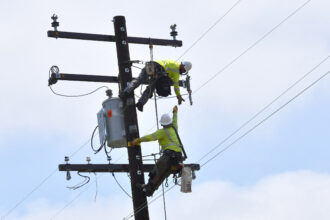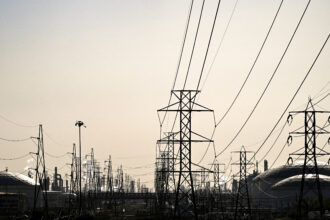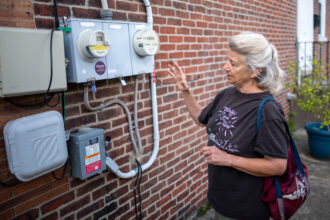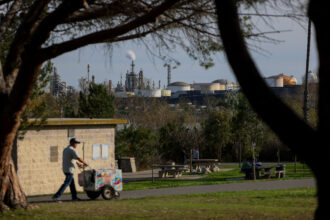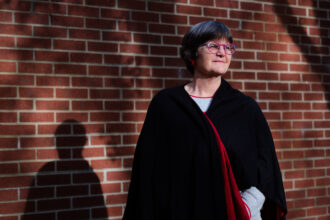This story originally appeared in New York Focus, a nonprofit news publication investigating power in New York. Sign up for their newsletter here.
In theory, the process that determines your energy bills plays out in public, through innumerable documents and comments posted online and hearings that are open to all.
In practice, watchdogs say, the key decisions are made behind closed doors, in confidential settlement proceedings where utilities set the agenda and bring legal firepower that is impossible for most other participants to match.
That secretive settlement process was a flashpoint at a state Senate hearing Tuesday on spiraling energy bills. Over the course of the day, senators questioned state and city officials, advocates, and utility representatives about the state’s energy policies and reforms that could rein in price hikes.
“The utility often controls the agenda, the schedule, the meeting, the order, the documents, which entities are at the table,” testified Laurie Wheelock, executive director of the consumer advocacy group Public Utility Law Project, or PULP. “That power struggle can be very difficult even for PULP to deal with, let alone a new organization or a small community-based organization.”
National Grid’s assistant general counsel Kris Kiefer acknowledged later in the hearing that the utility coordinates settlement talks, but said his company goes to “really painstaking efforts to make sure that all parties have an opportunity to discuss certain issues.”
“If we have an agenda item and we don’t happen to get to it because we spend a significant amount of time on something else, we’ll add it to the next standing committee meeting agenda and make sure that other parties see it and they can comment on it,” he said.
Utility settlement negotiations take place as part of what’s known as a rate case, which operates much like a court case. Regulators have taken 15 months on average to decide rate cases in the last few years; six or more of those months have often been tied up in the closed-door proceedings, a New York Focus review found. (The rest of the time is filled with back-and-forth filings and hearings that are largely public, if challenging for non-experts to navigate.)
Rate cases commonly used to be “litigated,” meaning parties hash out their disagreements in public before an administrative law judge. The judge then weighs the evidence and drafts a final compromise. Only one major gas and electric rate case has followed that process in recent years: the 2023–24 case brought by the embattled Central Hudson.
Instead, settlement negotiations have come to dominate. The utility can move to settlement after the main public portion of the process wraps up. There, parties in a rate case negotiate in private over all aspects of the utility’s spending plan and its impact on customers. The utility, state agency staff, and others who register to participate hammer out a deal that satisfies as many parties as possible. To be in the room, negotiators have to keep their mouths shut about what happens inside.
Critics testified at the hearing that this slants the table sharply in the direction of the utilities—and allows them to get away with practices that wouldn’t withstand public scrutiny.
“Because of confidentiality, I can’t disclose if, hypothetically speaking … utilities inflated their initial revenue requests to create the illusion of compromise,” said Irene Weiser, coordinator of the climate group Fossil Free Tompkins.
New York’s top utility regulator, Rory Christian, defended the state’s process in his remarks at the start of the hearing.
“This entire rate case process depends on robust and transparent public engagement,” said Christian, who leads the seven-member Public Service Commission and the parallel, 500-person agency that together oversee the state’s utilities. The outcome in each case reflects a “detailed, evidentiary record” that the commission evaluates against state laws, he said.
This story is funded by readers like you.
Our nonprofit newsroom provides award-winning climate coverage free of charge and advertising. We rely on donations from readers like you to keep going. Please donate now to support our work.
Donate NowUtility representatives defended the settlement process as an effective means of compromise. Kiefer, of National Grid, said confidentiality allows parties to speak freely and broker “positive outcomes” that could not be achieved through one-year litigated rate cases.
But he recognized a “power imbalance between the utility and some others” at the table, and said there was room to open up the process more.
Senators on Tuesday prodded witnesses to propose specific reforms, with an eye to the new legislative session that begins in January.
Wheelock suggested legislation that would return judges to the heart of the process while preserving one of the benefits of settlements: the ability to establish three-year rate plans, instead of fighting them out year after year. (Currently, litigated rate cases expire after one year.)
Weiser said it might be worth keeping the current settlement process largely intact—if it were stripped of its confidentiality. She proposed the legislature convene a commission to study the question and make recommendations.
Senator Leroy Comrie of Queens, who chaired the hearing, said more studies would only delay the kinds of changes needed.
“I think we need to support funding things immediately and not go down another road where we have to wait six months for a panel to be constructed,” he said. “We need to deal with these issues sooner than later.”
About This Story
Perhaps you noticed: This story, like all the news we publish, is free to read. That’s because Inside Climate News is a 501c3 nonprofit organization. We do not charge a subscription fee, lock our news behind a paywall, or clutter our website with ads. We make our news on climate and the environment freely available to you and anyone who wants it.
That’s not all. We also share our news for free with scores of other media organizations around the country. Many of them can’t afford to do environmental journalism of their own. We’ve built bureaus from coast to coast to report local stories, collaborate with local newsrooms and co-publish articles so that this vital work is shared as widely as possible.
Two of us launched ICN in 2007. Six years later we earned a Pulitzer Prize for National Reporting, and now we run the oldest and largest dedicated climate newsroom in the nation. We tell the story in all its complexity. We hold polluters accountable. We expose environmental injustice. We debunk misinformation. We scrutinize solutions and inspire action.
Donations from readers like you fund every aspect of what we do. If you don’t already, will you support our ongoing work, our reporting on the biggest crisis facing our planet, and help us reach even more readers in more places?
Please take a moment to make a tax-deductible donation. Every one of them makes a difference.
Thank you,





